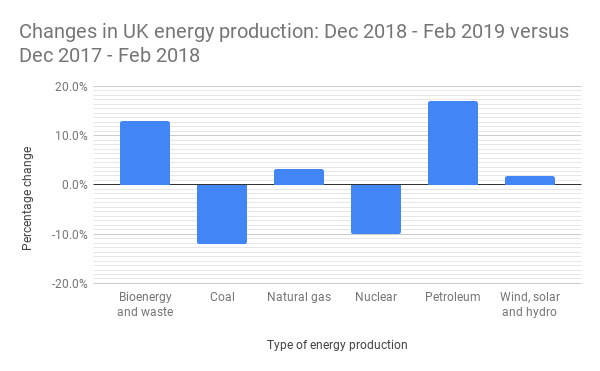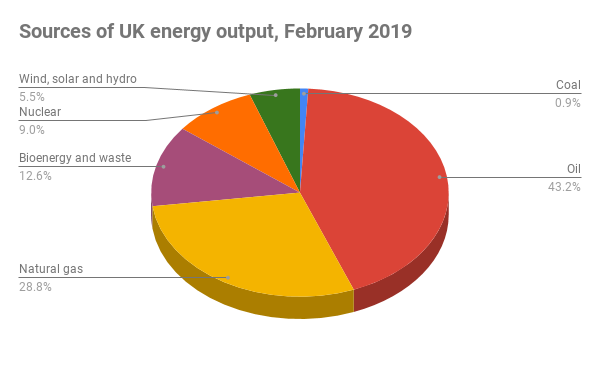The UK’s entirely coal-free week…. and other energy trends
The UK has just recorded its first coal-free week since the 19th century, according to the National Grid. Wednesday 8th May marked seven full days since the last coal generator came off the system and stopped powering British homes and businesses. The news has made headlines, but to experts at the Energy Advice Hub it wasn’t a surprising development.
A Government report which came out towards the end of April, Indigenous production of primary fuels, revealed that coal production this winter was down 12% on last winter. (The Department of Business, Energy and Industrial Strategy took the quarter encompassing December 2018, January 2019 and February 2019 and compared it to the equivalent three-month period a year before.)
We would place that 12% reduction in coal output in the context of a longer-term trend. The Total Energy report, published by the Government earlier this year, noted that coal production in 2018 as a whole fell by 14% to a new record low. But this fall was outpaced by the fall in coal consumption, which dropped by 19% in 2018 to another record low. In this context, a coal-free week at some point in 2019 seemed inevitable.

As recently as 2012, coal output alone was higher than bioenergy, wind, solar and hydro put together. Now the output from those four renewable energy sources is nearly 13 times that of coal and we would expect the renewables slice of the pie to get bigger.

Nuclear also saw a significant fall in production this winter, dropping by 10%. The Government report blames this on “a number of maintenance outages at major reactors, including Hunterston B and Dungeness B”. This may mean that the next set of figures show a recovery in nuclear output. But the story for coal looks like one of a long-term decline and phasing out, in line with the Government’s 2018 commitment to close all coal power stations by 2025.
Apart from coal and nuclear, all other energy sources showed increased output this past winter. Natural gas recovered from last winter’s outages with a 3.3% rise. Natural gas, bioenergy, wind, solar and hydro power all saw increased production as well.
However, oil continues to dominate the UK’s energy mix. It has recovered from last year’s depression in production and risen 17%. As well as a large percentage increase, it continues to have the largest energy output in absolute terms. The figures for February 2019 show that the UK produced 4.8 million tonnes of oil. Natural gas, the next highest fuel source, was 3.2 tonnes of oil equivalent. As coal-free weeks become more frequent, an oil-free week remains an unlikely prospect in the near future.













